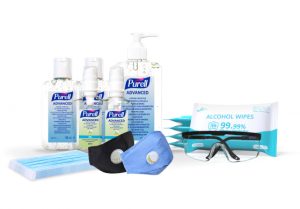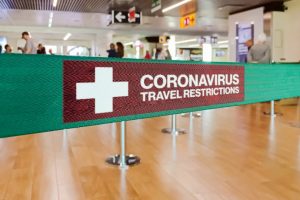2020 has been a challenging year for many industries, especially travel and hospitality. The first half of the year saw many resorts and attractions shutting down for weeks and even months. Museums, theme parks, and beaches were closed for extended periods of time. Now that we are entering autumn with the virus still lingering, you may be wondering if and when it will be safe to travel again. It is still not clear how long COVID-19 will be this prevalent, or when things will go back to “normal.” There does not seem to be a clear answer, however cases do seem to be decreasing as the year progresses. While this gives us hope, it does not mean we are out of the woods just yet.
While the CDC still recommends people postpone their plans out of caution, they still offer advice for those willing to travel. Before finalizing plans, it is recommended that travelers research the new cases and recommendations for specific states and destinations. It would also be wise to find out what kinds of travel restrictions have been placed on specific attractions and restaurants. For instance, if you are planning on visiting an area like New Orleans, it would be worthwhile to find out things like which guided tours or bars are open and at what capacity. It would not make much sense to visit a city for the history and food, and not be able to experience any of it when you arrive. The CDC has provided a very useful resource that addresses travel related concerns, which you can view here.
What is being done about COVID-19?
Nearly all public places in the United States have adjusted their operations to meet local and state requirements. Face masks, temperature checks, and various forms of partitions have been widely enforced to promote social distancing and slow the spread. Most public places like stores, restaurants, and theme parks have drastically lowered their occupancy limits as well.

Now what if there is someone sick on the plane or bus you are taking? This is naturally a large concern for those planning their trip. While airlines are requiring face masks and illness be reported, there is still a risk associated with flying. If there are any reports of passenger illness or death related to COVID-19 it is required by law that the others on that flight be contacted and recommended to be tested and quarantined. As of now, the safest form of travel is by car. Although car travel poses less of a threat than public transportation, precautions should still be taken, since stopping at gas stations and rest stops is inevitable on road trips.
What about theme parks?
Like many travel destinations, theme parks have had to adjust to the challenges the pandemic has created. Take Walt Disney World for example. Since reopening in August, Disney World has dramatically reduced their capacity. Guests are required to make a reservation to enter the park in advance; it is also asked that guests do not attend the theme park if they have come in contact with anyone sick or are sick themselves. Once at the gate, guests must have their temperature checked. All guests and employees are required to wear masks and keep six feet apart. Special partitions were also created to protect those waiting in lines for attractions. Speaking of attractions, some are temporarily shut down. The ones that remain open are running at a lower capacity and are sanitized in between rides. Unfortunately, large events like Mickey’s Not So Scary Halloween Party and even Christmas events have been cancelled. Since opening, there have yet to be any new cases at Disney, or caused by Disney travel. Many other theme parks like Universal Studios are following suit. Despite the drastic operation changes, travelers should still understand that any large public setting will increase their risk of contracting the virus.
Is it safe to visit friends and relatives?
Well, the short answer is no. The long answer is a little more complicated. Although visiting grandma typically does not include going to large public areas or attractions, there is still a risk of passing it to one another. If one must visit a family member, many factors should be taken into consideration. Have either party been sick or exposed to someone else who has? As difficult as it may be, social distancing should still be practiced. Maintaining social distance if possible and good hygiene are incredibly important.
Is camping safe?
Lastly, there must be something that does not pose a risk, right? Camping unfortunately still can pose a risk. Like car travel, rest stops and gas stations are going to be a part of your vacation. If it is possible to camp contact free, that would be best. However, just because one is in nature does not mean they should let their guard down. Masks should be packed in case you come into contact with other campers. Naturally, hand sanitizer and alcohol wipes would be brought along as well. Compared to other vacation options camping poses a lower threat of COVID, but higher threat of hungry bears.
If there is anything that can be learned at a time like this, it is that you can never be overly prepared. Although it is still not an ideal or necessarily safe time to travel, there are preparations one can make. Most importantly, travelers must plan, prepare, and protect themselves from illness. Plan your trip by researching travel restrictions. Prepare by stocking up on safety supplies or order a safety kit online. And lastly, follow CDC guidelines. If these three steps are taken, you should be able to enjoy a fun and safe vacation.

